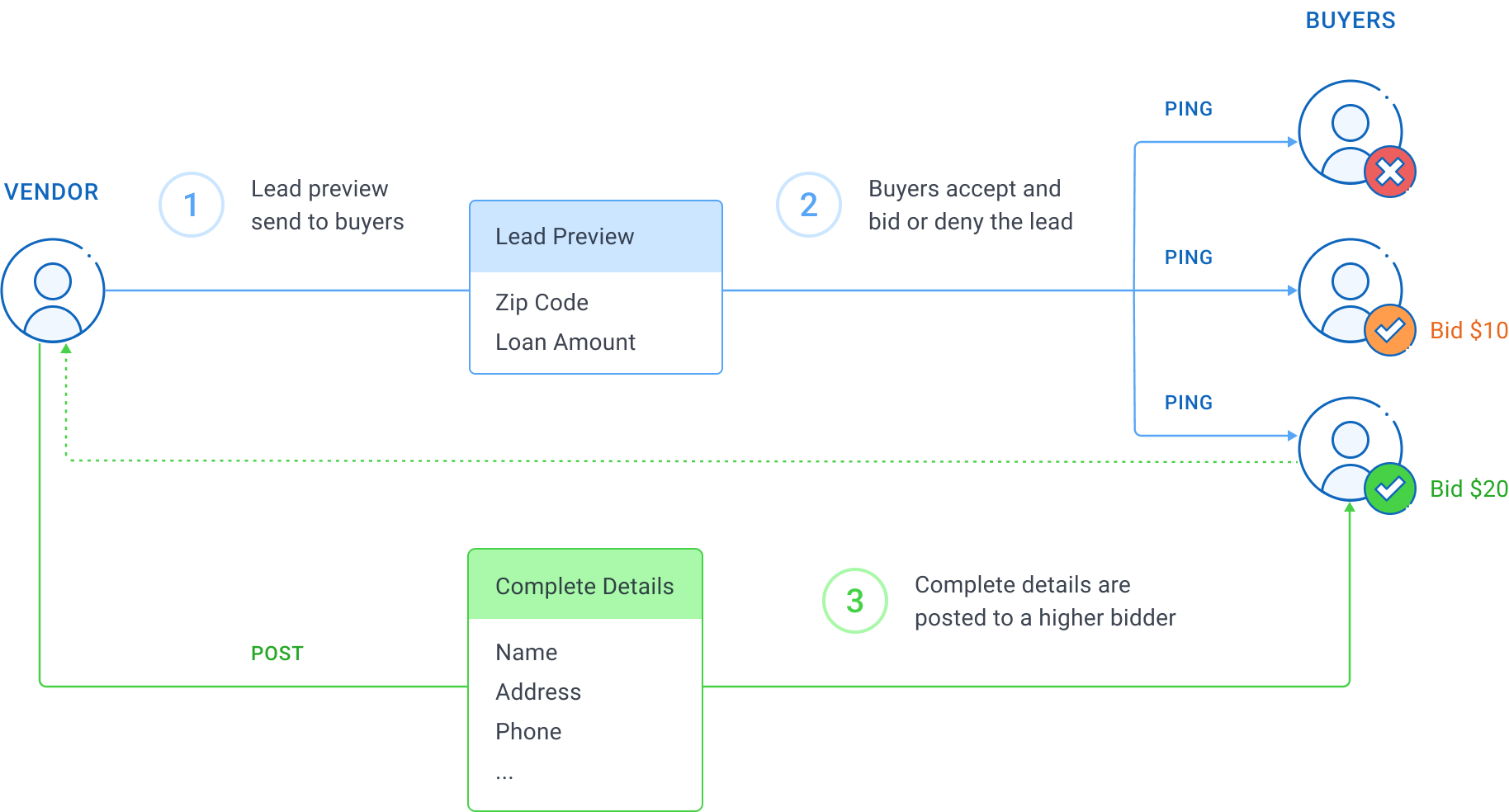Setting Up a Ping Post: A Comprehensive Guide
Ping post lead distribution has advanced the lead generation industry by ensuring real-time distribution and of high-quality leads at the best market price. An effective ping post process ensures that leads are sold to the most suitable lead buyers, optimizing profit and customer satisfaction.

A ping post system involves two stages. In the 'ping' stage, lead information is sent to potential buyers, who determine their interest based on the provided data. In the 'post' stage, the full lead details are sold to the highest bidder. This article provides a step-by-step guide on how to set up a ping post system.
Step 1: Understand the Basics
Before delving into the intricacies of ping post technology, it is important to understand the fundamental principles.
The 'ping' serves as a preliminary screening tool. It contains a preview of the lead's data - enough to pre-qualify the lead without delivering all the details.
The ping might include the lead's location, age range, or a summarized version of what they are looking for. For insurance leads, a ping might include the lead's location and the type of insurance they are interested in.
Buyers evaluate the information in the ping to gauge the lead’s relevance and potential value to their business. The limited data enables them to make an initial assessment regarding whether they want to pursue the lead.
If the data aligns with their criteria, they can bid on it. The ping is vital as it allows buyers to pre-qualify before buying leads without assessing all of the lead information.

The second phase is the lead post. This step comes into play once the bidding concludes and a buyer wins.
The buyer who places the highest bid or meets the seller's criteria is deemed the winner. At this point, the full lead information is posted to that buyer. Unlike the ping, the post contains complete lead information.
This includes all the details the buyer needs to follow up and convert the lead into a customer. This can include detailed contact information, specific requirements, and other pertinent data not disclosed in the ping.
The ping post process streamlines lead distribution by ensuring that leads are matched with the most suitable buyers. It also protects the lead's information until a buyer has been finalized. This is important in industries where data privacy is paramount. This technology also ensures that leads are sold at an optimal price, benefiting both the seller and the buyer.
Step 2: Choose and Configure Your Software
A successful ping post process hinges on robust and reliable lead distribution software. Several providers offer efficient lead distribution systems with ping-post capabilities. Factors to consider when choosing software include user-friendliness, technical support, custom options, and cost.
Once you've selected the software, the next step is to configure it according to your specific needs. This involves setting up lead routing rules based on geography, lead source, time of day, etc. You may also need to establish pricing rules and decide on the specifics of the bidding process.
Step 3: Establish Connections with Buyers
After you have set up and configured your ping post software, establish connections with your buyers.
This is typically done through an API (Application Programming Interface). An API is a software conduit that allows two applications to communicate with each other.
APIs are crucial in the ping post process as they allow data to be sent in real-time. This ensures quick delivery of relevant information to potential buyers as soon as a lead is registered. Their responses can also be received without delay.
As you establish connections with buyers, it’s important to understand their lead delivery preferences and capabilities. Tailoring your lead distribution method to align with the buyer’s requirements will ensure a smooth transaction process.
Establishing and managing connections with buyers requires understanding the technical details and delivery methods that best suit both parties. The goal is to transmit lead data efficiently and securely, in line with the buyer’s capabilities.
Step 4: Test Your Ping Post System
Before going live, the ping post system should be thoroughly tested. Test lead delivery and ensure that leads are properly received by the buyers. This stage is crucial for catching any bugs or issues that could affect the performance of your system.
Step 5: Monitor and Optimize
Finally, once your system is live, constantly monitor its performance and make necessary adjustments. You should monitor which types of leads sell and which don't and lead delivery success rates. Regularly tracking and analyzing your system's performance can help optimize it and ensure that you're maximizing your revenue.
Conclusion
Setting up a ping post system might seem daunting at first. With the right software and a thoughtful approach, it's a process that can significantly enhance your lead distribution efforts.
Ping post ensures that leads are sold to the most appropriate buyer, as well as optimizing lead quality and distribution speed. The key to a successful ping post setup is defining requirements, choosing the right software, and monitoring and optimizing your system.





